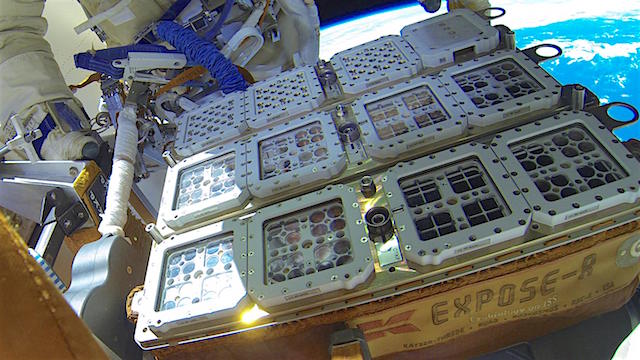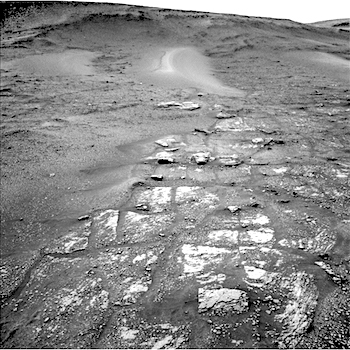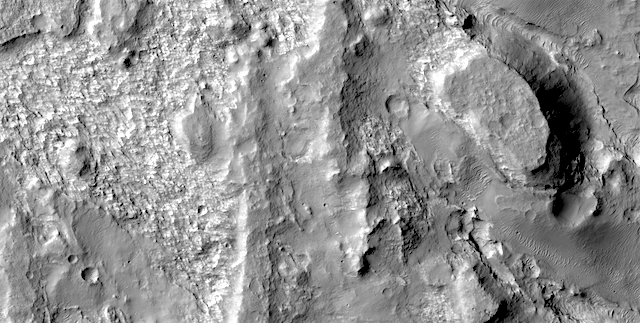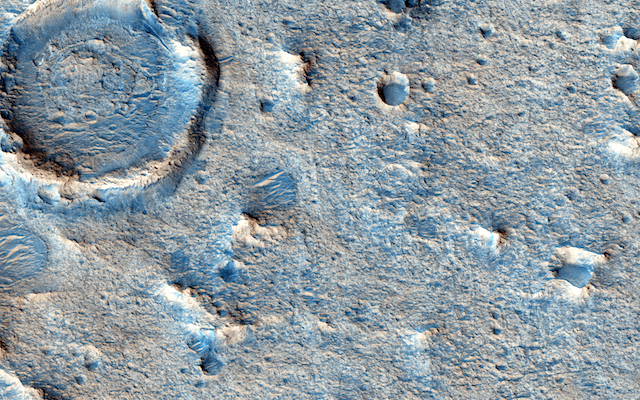 Sol 2359, March 27, 2019. Curiosity has driven about 29 meters (95 feet) in a northeast direction across the clay-bearing unit. The south side of Vera Rubin Ridge forms the skyline on the left side of the rover, and there’s a small layered outcrop poking up through the soil ahead on the right. The Navcam composite view above looks forward, the one below looks aft. Click either image to enlarge it.
Sol 2359, March 27, 2019. Curiosity has driven about 29 meters (95 feet) in a northeast direction across the clay-bearing unit. The south side of Vera Rubin Ridge forms the skyline on the left side of the rover, and there’s a small layered outcrop poking up through the soil ahead on the right. The Navcam composite view above looks forward, the one below looks aft. Click either image to enlarge it.
-
Recent Posts
Archives
Links
general
mission instruments
- CRISM: Compact Reconnaissance Imaging Spectrometer for Mars
- CTX: Context Camera
- HiRISE: High Resolution Imaging Science Experiment
- MARSIS: Mars Advanced Radar for Subsurface and Ionosphere Sounding
- SHARAD: Shallow Radar
- THEMIS: Thermal Emission Imaging System
missions
- All Mars missions list
- Curiosity rover
- ExoMars
- Hope (al-Amal) orbiter
- InSight
- Mars Atmosphere and Volatile Evolution Mission (MAVEN)
- Mars Exploration Rovers (MER)
- Mars Express (MEX)
- Mars Odyssey
- Mars Orbiter Mission (MOM) / Mangalyaan
- Mars Reconnaissance Orbiter (MRO)
- Mars Science Laboratory (MSL)
- Perseverance Rover
- Tianwen-1 orbiter/rover
news

















